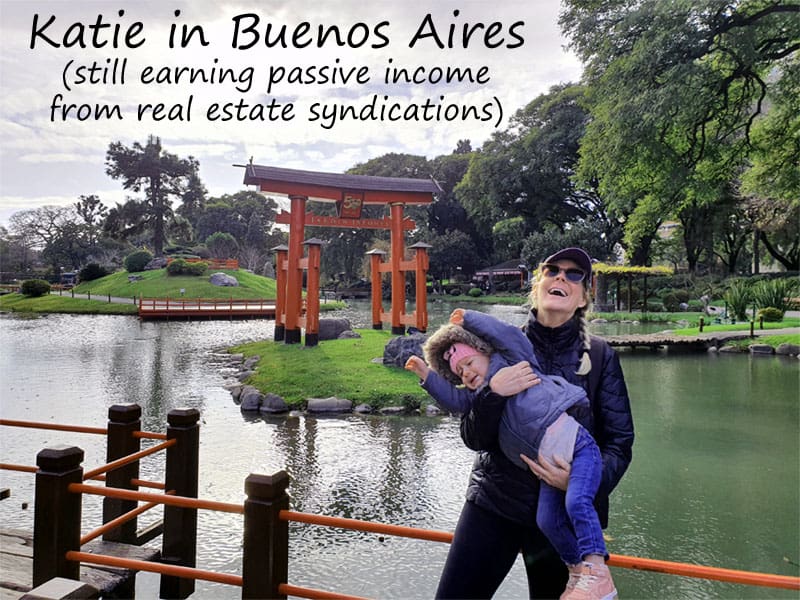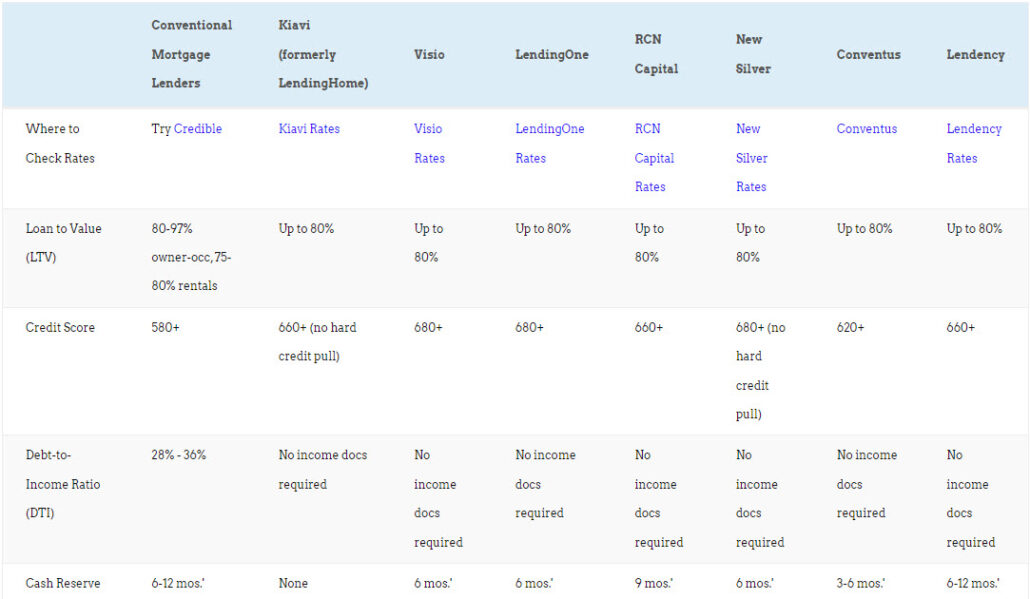The Big Picture On How To Minimize Passive Income Tax:
-
- Passive income is taxed differently depending on the type – dividends, interest, rents, capital gains, business income, and royalties all have specific tax rules.
- Rental real estate income can be offset with over 20 types of deductions and depreciation.
- High-income earners pay an extra 3.8% tax on investment income over certain thresholds.
Disclaimer
The information provided on this website is for general informational purposes only and should not be construed as legal, financial, or investment advice.
Always consult a licensed real estate consultant and/or financial advisor about your investment decisions.
Real estate investing involves risks; past performance does not indicate future results. We make no representations or warranties about the accuracy or reliability of the information provided.
Our articles may have affiliate links. If you click on an affiliate link, the affiliate may compensate our website at no cost to you. You can view our Privacy Policy here for more information.

Passive income is the key to reaching financial independence and retiring. With enough passive income, you can ditch your day job—or at least cover the gap between what your current job pays and what your dream work pays.
But as with most forms of income, Uncle Sam wants his cut. That could include regular income, self-employment, and capital gains taxes.
What Is Passive Income?
Passive income is money you get from investments requiring little to no effort to earn and maintain.
The most common passive income types include investment properties, dividends from stock market investments, bonds, royalties, or business ventures where employees and managers run the day-to-day operations. But you’ll find a never-ending list of passive income ideas online, from writing e-books to dropshipping.
(Quick FYI: 20% of US households earn passive income, and the median being $4,200 a year. 36% of millennials also generate passive income. Now you’re all caught up.)
Now, some of you might be surprised to learn that we love buying rental properties because it’s one of the most lucrative streams of passive income. Shocking, I know.
Investors collect ongoing real estate cash flow by purchasing a property and renting it out. Rental properties also come with huge tax benefits, from landlord tax deductions to property depreciation to avoiding capital gains tax on real estate.
But rental income is far from the only type of passive income. Uncle Sam taxes passive income differently, from dividends to interest, rents to capital gains.
How Passive Income Is Taxed
To maximize your returns, you must understand how passive income is taxed.
The exact taxes on passive income depend on the type of passive income, as taxation laws differ for passive income types. The following represent the most common taxes on passive income.
Qualified Dividends
American taxpayers pay lower tax rates on qualified dividends than ordinary dividends. Specifically, those in the lowest three income tax brackets (0%, 10%, and 12%) pay no taxes on qualified dividend income.
Here’s the tax bracket table for qualified dividend income for 2024 for 2025 filing:
| Rate | Single | Married Filing Jointly | Married Filing Separately | Head of Household |
| 0% | $0 – $47,025 | $0 – $94,055 | $0 – $47,025 | $0 – $63,000 |
| 15% | $47,025 – $518,900 | $94,055 – $583,750 | $47,025 – $291,850 | $63,000 – $551,350 |
| 20% | $518,900+ | $583,750+ | $291,850+ | $551,350+ |
Ordinary Dividends
Dividend payments that don’t come from qualified dividends are taxed at your ordinary income tax rate.
For the tax brackets in 2024 (filed 2025), that looks like this:
| Tax Rate | Single | Married Filing Jointly | Married Filing Separately | Head of Household |
| 10% | $11,600 or less | $23,200 or less | $11,600 or less | $16,550 or less |
| 12% | $11,601 to $47,150 | $23,201 to $94,300 | $11,601 to $47,150 | $16,551 to $63,100 |
| 22% | $47,151 to $100,525 | $94,301 to $201,050 | $47,151 to $100,525 | $63,101 to $100,500 |
| 24% | $100,526 to $191,950 | $201,051 to $383,900 | $100,526 to $191,950 | $100,501 to $191,950 |
| 32% | $191,951 to $243,725 | $383,901 to $487,450 | $191,951 to $243,725 | $191,951 to $243,700 |
| 35% | $243,726 to $609,350 | $487,451 to $731,200 | $243,726 to $365,600 | $234,701 to $609,350 |
| 37% | Over $609,350 | Over $731,200 | Over $365,600 | Over $609,350 |
Unfortunately, dividends from real estate investment trusts (REITs) don’t count as qualified dividends. That includes dividends from real estate crowdfunding platforms such as Fundrise and Streitwise, and certain pass-through entities, including master limited partnerships.
Interest from Bonds & Loans
In most cases, you pay the same tax rate on interest income as your regular income tax rate. That includes bond interest, high-yield savings account interest, and interest on loans such as private notes or your Groundfloor investments.
However, municipal bonds are tax-exempt, and you pay no income taxes on the interest. Municipal bonds yield about 75% as much as comparable Treasury bonds. If you bought them in your home state or city, municipal bonds might also be exempt from state and local income taxes. Accountants refer to these as triple tax exemptions.
You can also avoid paying federal income tax on Series I or Series EE bonds if you use the money for qualified education expenses such as tuition and fees. Read up on these IRS exemptions here.
Rental Income
Earned income from rental properties is generally taxed at your normal income tax rate.
However, landlords can take over 20 types of rental property tax deductions. You can also take rental property depreciation and potentially show a paper loss even though you earned real income from your rental property.
Landlords can use these passive losses to offset other passive income types or up to $25,000 in active income, such as W2 paychecks.
You may also be able to take the qualified business income deduction, also known as a Section 199A or pass-through income deduction. But do your homework on whether you can take the QBI deduction as a landlord, speaking with either a tax code specialist or, at the very least, researching the IRS rules.
Report rental activity income on Schedule E of your tax return. That means you can take deductions on real estate activities while also taking the standard deduction. Make sure you keep evidence of all rental property income and expenses you deduct in case you face a tax audit. The same goes for when you report rental losses.
The same tax rules apply to rent distributions when you own fractional shares in rental properties, such as through Arrived or Lofty. For more details, read up on exactly how rental income is taxed.
Uncle Sam also taxes distribution income from real estate syndications at your regular income tax rate.
However, limited partners (passive investors) in real estate syndications often pay no taxes until the property sells since syndicators typically accelerate the depreciation using a cost segregation study. Read up on how to invest in passive real estate syndications as a member of our real estate investment club.
Capital Gains
Capital gains tax applies to the profit when you sell an investment. Capital gains tax is applied to the difference between the initial investment amount (your cost basis) and the total asset sale proceeds.
Capital gains taxes are determined by when you own an asset or how long it’s held. Short-term capital gains taxes apply to investments held for one year or less, while long-term capital gains taxes apply to investments held for more than a year. Short-term capital gains are taxed at your regular rate, while long-term capital gains have a typical rate of 15% (20% for high earners). But like dividend income, Americans in the lowest three tax brackets pay no long-term capital gains tax on profits.
Business Income
Anyone who owns a business or works as an independent contractor must pay self-employment taxes.
It applies regardless of your “material participation” in business activities—whether you work it like a full-time job or completely passively.
Self-employment tax applies to certain types of income derived from self-employment, such as freelancing or running an LLC. It is generally made up of the Social Security and Medicare taxes.
As a business owner, you pay the employer and employee sides of FICA taxes. These double FICA taxes typically apply at a flat rate of 15.3%.
Regarding passive income, self-employment tax applies the same way as any other form of self-employment income. This means that an individual who earns passive income (from dropshipping, selling printables, or selling online courses, for example) must pay self-employment tax on the income earned. This applies even if the individual is not actively participating in the activities associated with earning the income.
Self-employed workers like real estate professionals and anyone earning a 1099 income must also pay self-employment taxes.
Royalties
The Internal Revenue Service taxes royalty income from art, written works, or other intellectual property at your ordinary tax rate.
As for tax forms, you typically list it on Schedule E on your tax return.
NIIT-Picking: Net Investment Income Tax
If you earn too much money, Uncle Sam taxes you extra. Enter the net investment income tax (NIIT).
Single taxpayers with a modified adjusted gross income (MAGI) over $200,000 must pay an extra 3.8% tax on investment income. The threshold only rises slightly to $250,000 if you’re married filing a joint return.
The NIIT applies to the following passive income types:
-
- Dividends (qualified and nonqualified)
- Capital gains (short- and long-term)
- Taxable interest
- Rental and royalty income
- Passive activity income (from investments you don’t actively participate in)
- Business income from trading stocks, ETFs, mutual funds, or commodities
It does not apply to:
-
- Tax-exempt interest from municipal bonds or funds
- Tax-exempt income from the sale of your primary home (section 121 exclusion)
- Defined benefit pension plan or retirement plan annuity payments
- Payouts from a deferred compensation plan from a state, local government, or tax-exempt organization
- Life insurance proceeds
- Income from a business you actively participate in
One more reason to take advantage of real estate tax advantages and depreciation!
Types of Passive Income That’s Not Taxed
There are very specific types of income you earn passively that won’t face taxation like other income streams. Some examples include:
-
- Some municipal bonds: Municipal bonds are an agreement between a borrower (such as a city or a state) and a lender where the borrower agrees to pay a certain sum of money to the lender over a predetermined length of time. The interest payments from such bonds are not typically subject to federal taxes.
- Life insurance proceeds: Life insurance proceeds are generally not subject to income tax when they are paid out to the beneficiaries of the policy.
- Alimony and child support: Payments made in the form of alimony or child support are considered non-taxable income by the IRS because they’re not considered income for the recipient.
- Inheritance money: Inheritance money is typically not subject to taxation since it’s not considered income. Substantial estates may have to pay estate taxes, though.
Understanding Tax Deductions for Passive Income Streams
Passive income is subject to various taxes, just like ordinary income is. You may face income taxes, self-employment taxes, and capital gains taxes. Understanding the deductions associated with these taxes can help lower your tax burden and maximize your after-tax return on passive income investments.
-
- Business expenses deduction: Depending on the nature of the passive income, many business expenses can be associated with it. Common business expenses for passive investments include advertising, accounting fees, and travel expenses related to the investment.
- Home office deductions: If you exclusively use a portion of your home as your primary place of business, you may be able to take the home office deduction. Deductible expenses include rent or mortgage payments, utilities, and insurance premiums. Be careful with this one, though; the IRS has cracked down on it in recent years.
- Capital losses: Capital losses can be used to offset capital gains to an extent, reducing your overall tax liability. You can “artificially” create losses through tax loss harvesting (more on that momentarily).
You can maximize your after-tax return by understanding the deductions available to reduce your passive income tax liability. For more detailed information, consult with a tax professional.
Minimizing Passive Income Tax
Understanding how to use our tax system to your advantage is no easy task, but there are ways to reduce the amount of taxes you have to pay. Here are some key strategies to consider:
-
- Utilize tax deductions: As the section above should have proven to you, there are a considerable number of deductions available to you, such as those for expenses related to maintaining or managing your passive income streams.
- Utilize tax loss harvesting: Tax loss harvesting is a strategy that involves selling investments at a loss in order to offset any gains in the current tax year. Easy investments to use this strategy with are shares of stock, since they’re liquid assets with an active market. This can help to reduce the amount of taxes you owe on any passive income you receive. However, you need to avoid having the transaction be considered a ‘wash sale’, which means buying the same or similar security within 30 days of a tax loss harvest sale.
- Open a retirement account: Retirement accounts such as a Traditional IRA or Roth IRA can help to reduce taxable income and offer tax-advantaged growth opportunities. Contributions to these accounts are tax-deductible, and the income generated within them is not taxable until withdrawn.
- Utilize 1031 exchanges: A 1031 exchange can significantly improve your real estate bottom line. After selling a property, you can deposit the proceeds to a qualified intermediary, look for a another property of the same or more value within 45 days, and close the sale within 180 days. 100% of your capital gains tax is then deferred to when you sell your new asset.
- Utilize tax shelters: Tax shelters such as annuities and real estate syndication can offer tax savings. Be sure to consult with a tax professional to ensure that any tax shelters you consider utilizing meet IRS requirements.
FAQs
What is passive foreign income in the US?
A passive foreign investment company (PFIC) is a non-U.S. corporation with either 75% or more passive income or 50% or more assets that produce passive income.
Are all US citizens subject to income tax?
All U.S. citizens are subject to federal income tax. However, not everyone must file a tax return—the requirements for filing tax returns are found in 26 U.S.C. Section 6011.
What is the tax write-off for passive income?
The tax write-off for passive losses is up to $25,000 against ordinary income if your modified adjusted gross income (MAGI) is $100,000 or less. The write-off phases out by $1 for every $2 of MAGI above $100,000 until it is completely phased out at $150,000 MAGI.
Why do people say passive income isn’t taxed?
People incorrectly say passive income isn’t taxed. Passive income is taxed the same as active income. The exact tax treatment depends on the source of the passive income and your overall financial situation.
Final Thoughts on Taxes on Passive Income
How passive income is taxed gets complex and confusing quickly. However, a basic understanding of the taxes on passive income and how to reduce them helps you lower your effective tax rate.
Knowing which portfolio income streams are taxable, which tax rate applies, and taking advantage of available deductions and credits can help minimize the taxes owed on passive income. That especially goes for real estate investors, who may earn money on rents, loan proceeds, and capital gain income on properties and fall under either active participation or passive activity rules.
And as a bland but no less true final piece of advice, consult a tax professional to ensure all taxes are paid correctly and accurately.♦
What are your favorite ways to reduce taxes on passive income? What questions do you still have about how passive income is taxed, especially income from real property?
























Goes to show that if you’re below the threshold for paying taxes on qualified dividends, you can leave those high-dividend stocks in your taxable brokerage account, while putting ordinary dividend stocks and REITs in your Roth IRA.
Very true Yarra!
Very informative and useful!
Thanks Harry, much appreciated!
Great content! I’m not against paying taxes but minimizing them is a good thing for us taxpayers too.
Agreed, if you want to build wealth you need to know the rules of the tax game.
Always worth understanding the rules of the game completely. You can structure your income so that you pay almost nothing in taxes if you do it right.
Amen Nelly!
Great guide to make taxpayers guilt-free from paying taxes!
The better you understand the differences in how investments are taxed, the better you can optimize your take-home returns. Know the rules if you want to win the game!
Absolutely Lila!